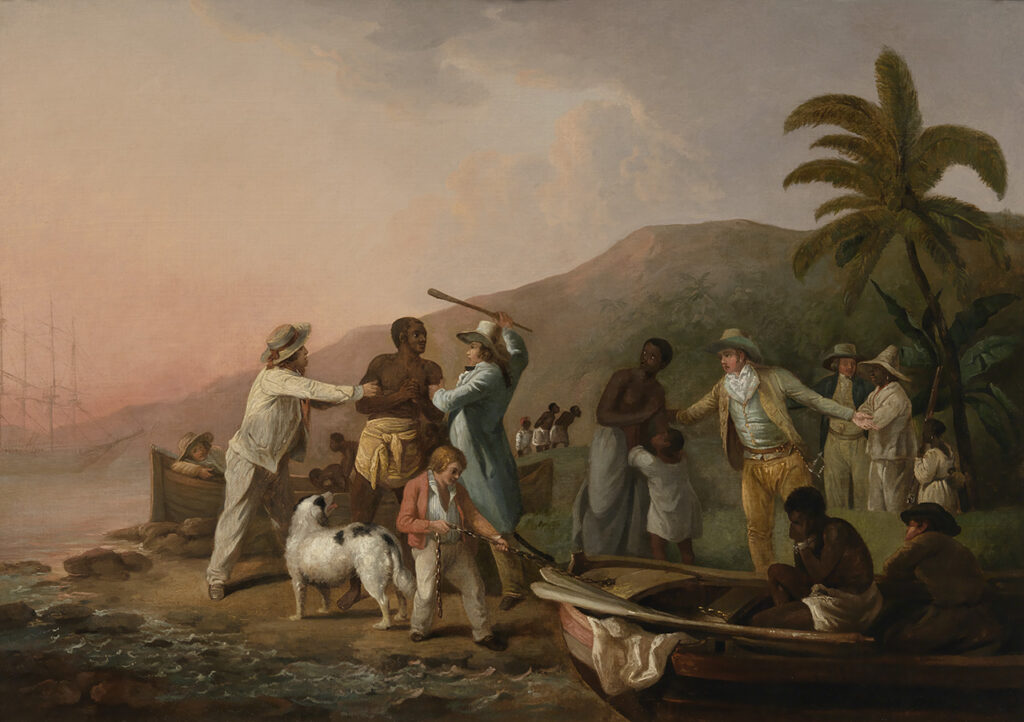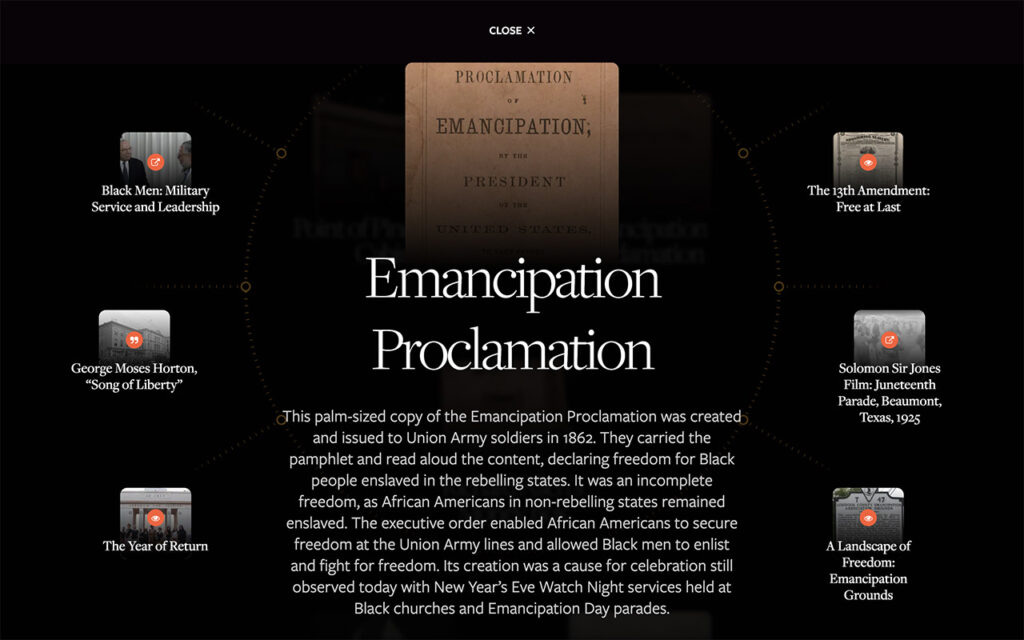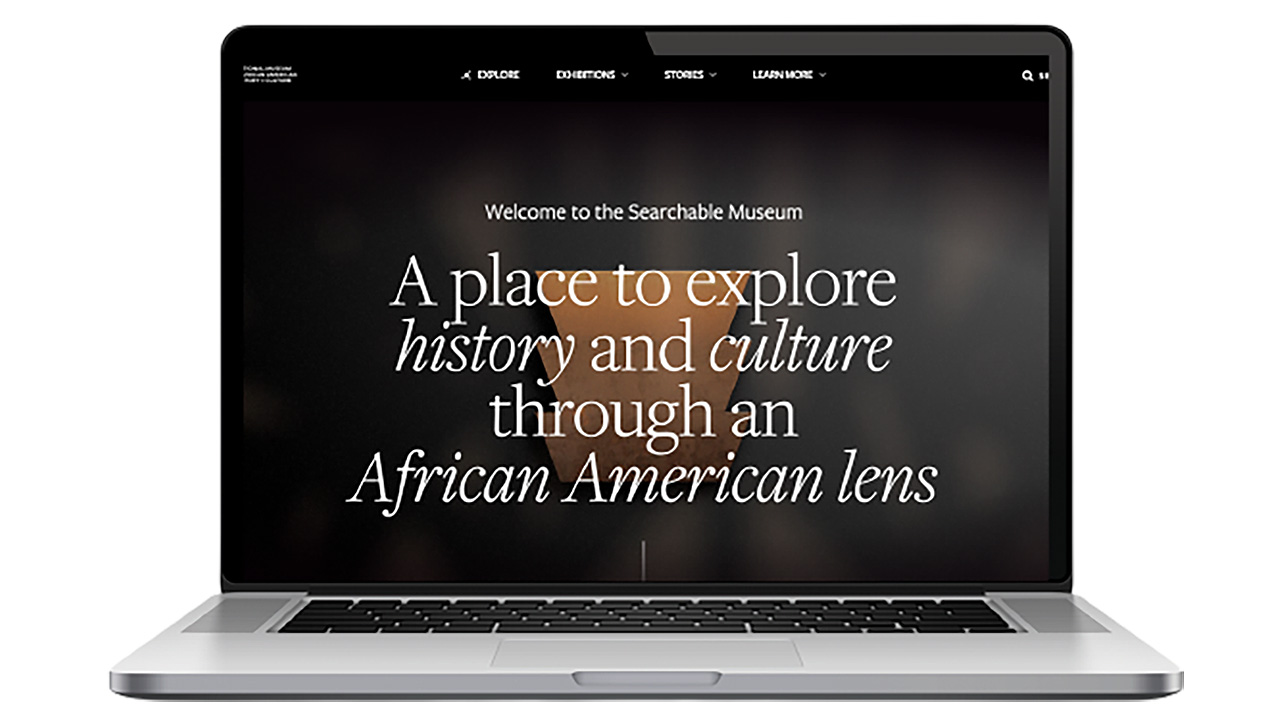On November 18, the Smithsonian’s National Museum of African American History and Culture (NMAAHC) launched its new online platform, the Searchable Museum. It offers visitors access to NMAAHC collections, narrative accounts, and educational resources as part of a project that was more than a year in-the-making and represents one of the museum’s largest digital undertakings. The initiative was funded by Bloomberg Philanthropies.
How it works
The Searchable Museum’s first digital exhibition is Slavery and Freedom, which documents a four centuries-spanning history of slavery through objects from the museum’s David M. Rubenstein History Galleries. Visitors to the exhibition are greeted by an introductory video, before entering four discrete parts, each split into chapters containing artworks, artifacts, multimedia, and historical material that explore how a global economy was built on the back of an inhuman trade. These assets — from 3D models to videos to audio podcasts — were gathered from the NMAAHC’s existing digital collection or were created especially for the platform.


Above: “Slave Trade,” by George Morland, circa 1788 — one of the works on view in Slavery and Freedom. Image: Collection of the Smithsonian National Museum of African American History and Culture. Below: Section II of the exhibition’s interface, which features a navigation bar and banners. Image: The Searchable Museum
Besides the exhibition, the Searchable Museum website also features sections that draw from the NMAAHC’s digital archives. In one, titled the Constellation, visitors can examine a specific artifact and open connected stories in African American history. For example, a shawl that once belonged to Harriet Tubman links to related content on Negro Spirituals and activist Fannie Lou Hamer’s 1964 testimony at the Democratic National Convention.
Other sections include Lesser-Known Stories, which spotlights the lived histories of seven African Americans, and Present to Past, which situates current themes relevant to the Black experience, including landownership and education, within a historical context.
Why it matters
The Searchable Museum is a triumph in making cultural heritage more accessible, ensuring its rich and detailed documenting of slavery’s history and legacy reaches as wide an audience as digitally possible. In this way, the platform doesn’t just house, but reflects the shared past of African Americans.

The Constellation section of the Searchable Museum invites visitors to examine a specific artifact and explore related stories. Image: The Searchable Museum
While the Searchable Museum follows the pandemic-accelerated trend of virtualizing the exhibition-viewing experience, the platform wields technology with a purpose, deploying digital tools to preserve a history and heritage that is complicated by continued erasure and repression. In the same vein are projects like Levine Museum’s KnowCLT mobile app and Valentine Museum’s augmented reality tour, which leverage technology’s key features to recenter African American culture and history.
The platform further signals the NMAAHC’s broader ambitions to grow its digital presence. The museum intends to continually update and expand the Searchable Museum with additional content, with the ultimate goal of bringing all of its exhibitions online. Next Spring, it plans to launch its existing physical exhibition, Making a Way Out of No Way, on the platform.
What the museum said
“Allowing the public to virtually revisit the originating struggle for American freedom in the Slavery and Freedom exhibition reminds us of the centrality of the African American journey to the American experience — a story of triumph, resilience and joy over the centuries. With this launch, we look forward to continuing the museum’s digital outreach and efforts.” — Kevin Young, the Andrew W. Mellon Director, National Museum of African American History and Culture



